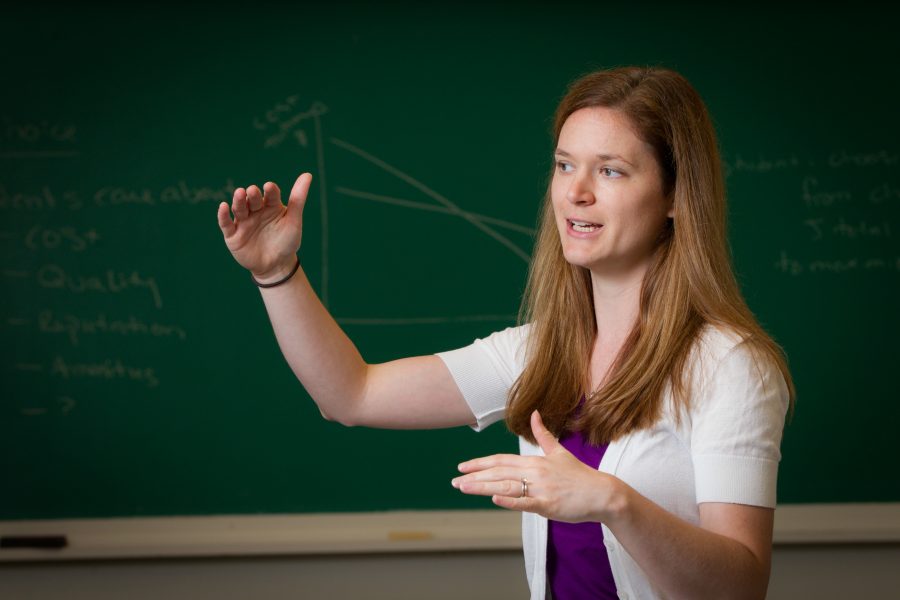Amanda Griffith, Wake Forest’s Ollen R. Nalley associate professor and associate chair of the department of economics, recently studied the impact of class makeup on students’ interest in pursuing the study of a STEM subject.
The research findings are published in the article titled “First Impressions in the Classroom: How do class characteristics affect student grades and majors,” which Griffith co-authored alongside Joyce Main, a Purdue professor, and published in the journal Economics of Education Review.
Griffith commented on her initial inspiration for this research as her search for improved comprehension about the mechanisms by which women and minorities become disproportionately underrepresented in STEM fields of study.
“STEM fields, in particular engineering, have shown very low representation of certain groups of students, including female and minority students,” Griffith said. “Understanding why fewer women and minorities choose these fields, as well as what shapes their trajectory and success through these majors, is essential for designing policy to correct the underrepresentation.”
After identifying the aim of her research, Griffith proceeded to examine data on the class makeup of the first required course in engineering at a large, public Midwestern research university.
Griffith examined the three primary components of class makeup — peer ability, gender effects and role model effects — and how these impacted the students’ academic achievement and personal interest to persist in a STEM field of study. Based on this data, she analyzed how the aspects of class makeup affected the achievement and desire of students enrolled in their first engineering course to continue within the STEM field of study.
Her research showed that there is a correlation between the composition of gender, peer ability level and role models in the classroom for the initial engineering prerequisite and the achievement and interest of students in continuing to study engineering.
In regard to female representation in STEM studies, the gender composition of initial engineering classes had a notable influence. The research outcomes indicated that an increase in the representation of females in foundational engineering courses can improve the persistence of both females and males in further study of and presence of majors in that subject area.
Another component of class makeup, the proportion of minority students in the class, was found to impact students’ academic achievement. The outcomes showed that an increase in the representation of minority students can improve the grades minority students receive in the class.
Also, the peer ability level within the class correlated to the students’ level of interest in persisting in engineering studies. An increase in students with lower ability levels in the class makeup negatively correlates to the interest of students in pursuing further study of engineering. However, an increase in students with high levels of ability in engineering classes improved the grades that all of the students, including those with lower ability levels, received in the class.
These supported her former hypothesis that the class composition of foundational engineering courses influences not only the interest of students in further pursuit of STEM fields of study but also the academic achievement of the students in these courses.
The conclusive findings of this research provide insight into the effects of class composition on student achievement and decision-making, which will prove integral to further policy discussion of how to increase interest and the representation of students, especially minorities and women, in STEM fields of study.
“We hope that this information can be used to think carefully about how an experience in an introductory class may help or hinder students on their way to a degree in a STEM field,” Griffith said.










